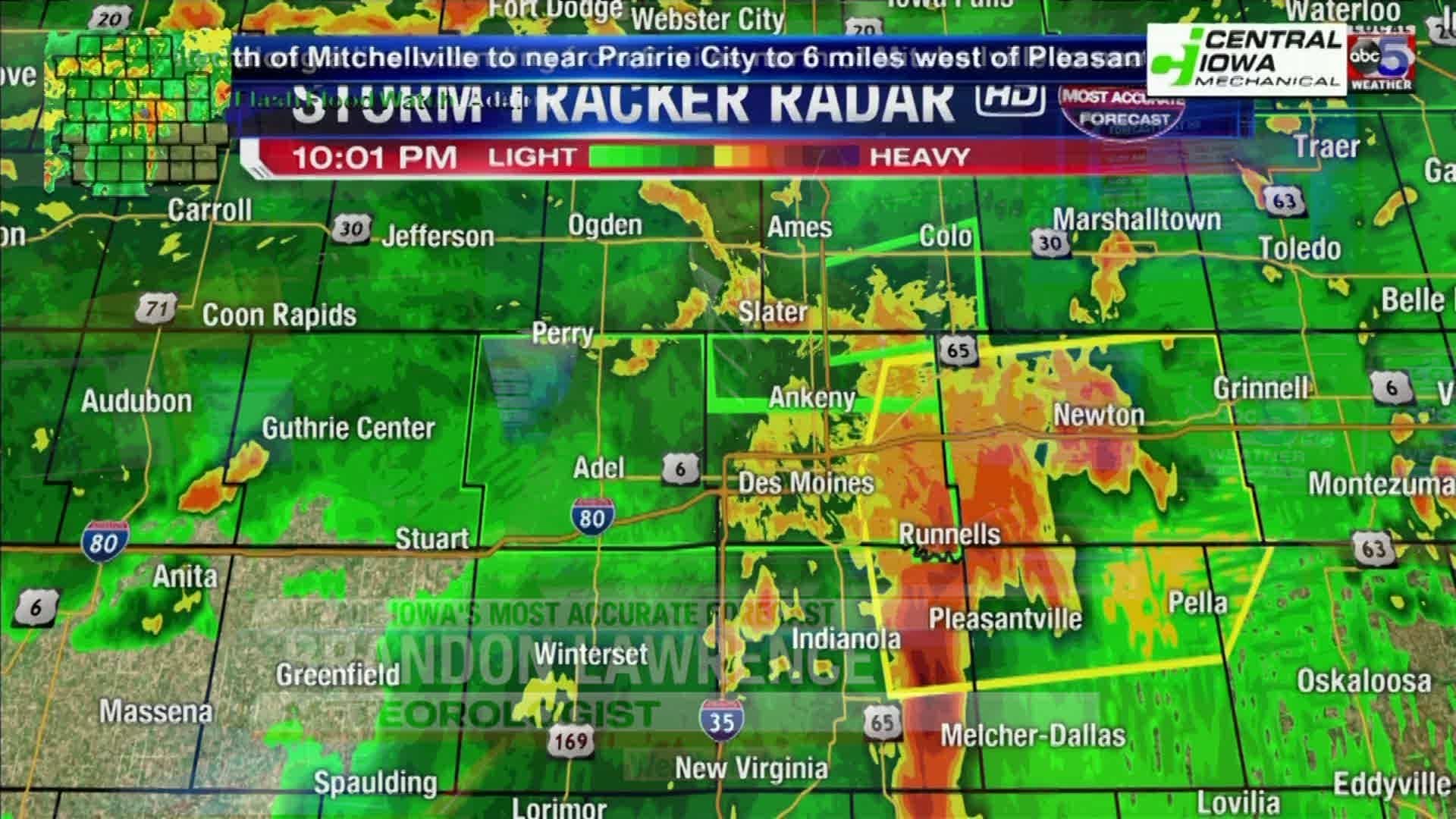DES MOINES — One man we saw every day immediately following the floods was Polk County’s Emergency Operations Manager AJ Mumm. We saw him give daily updates for the first week after the flooding happened. Mumm brought in crews to run the emergency operations center before the rains really intensified. He says his team learned a lot, both good and bad, during the historic flood.
“Our interaction with the National Weather Service started that Thursday and Friday, and we certainly saw that there was potential for a system to come through over that weekend,” says Polk County Emergency Management Director A.J. Mumm.
By late that Saturday night, Mumm knew this was no typical rain. “And I think the potential was for three or four inches, which is a lot of rain, but we ended up seeing it was closer to 10.”
Around 7:30 pm as the rains were intensifying, Mumm and his team decided to bring extra people to run the emergency operations center. “It took us some time to get here because like everyone else we didn’t want to drive through water over the roadways and it took us about 45 minutes to get to the EOC, and at that time we notified all the cities that we were about to have a conference call.”
Also triggered in those initial hours: a CODE RED, an automated emergency notification system.
As they dealt with rising waters and imploding homes, they were also monitoring other water levels. “So that was always in the back of our minds and then we get that 7 inch rain right on top of this. If there was a silver lining in that, it was the seven inch rain largely fell at Saylorville or below.”
Several spots were in imminent danger and that meant quickly and accurately sharing information became critical. “Obviously Polk County is the largest county in the state, but on that day we still needed help, and the great news was there were a lot of friends and neighbors who pitched in and helped us.”
After pulling an all-nighter, Mumm called a press conference on Sunday morning, with first responders and local leaders all in attendance to separate fact from fiction.
It became the practice throughout the week, to sort through one of the most furious floods central Iowa had seen in decades. “Public information is always going to be a challenge. The information is changing so rapidly with an event like this and it was difficult to keep pace with the information and really the hundreds of different sources of information.”
In the days to follow, Governor Reynolds toured the damage. Struggling home owners sought out the county desperately needing repairs or buyouts, or even a combination of both.
As they do with all disasters, Mumm’s team continued to assess what was working –and what wasn’t. “Some of those things we identified in the areas of strengths were the tremendous amounts of cooperation, coordination amongst the cities, and I’d be remiss if I didn’t mention the real heroic work of the that took part by the first responders that were out there.”
Mumm says the county’s hazard mitigation plan has been updated, engineers consulted, and other lessons implemented. He says of the tens of thousands of properties impacted, very few were in the actual flood plain. “It comes with a great deal of cost and sometimes engineering to the level of a ten inch rain is just beyond the benefit/cost analysis and I think that’s really tough for people to digest and understand, but that’s the difficult job people in engineering and as our communities develop, we need to factor those in and the good news is that our communities in the metro are giving that a lot of thought.”
For those who moved back home, he says taking a sober look at reality will better prepare them for next time too. “Some steps you can take now on a nice day to inventory your property and make sure you have adequate insurance and I think that was an enormous myth that, oh, I can’t get flood insurance because I live in a flood plain, and that’s just that, they’re myths.”
Mumm says the success of a rebuild will take a long time to come to fully realize. “This is going to be measured in years, not weeks and months, but I think overall, our community has learned a lot. We’ve been prepared and I think we’re going to be even more prepared tomorrow.”

